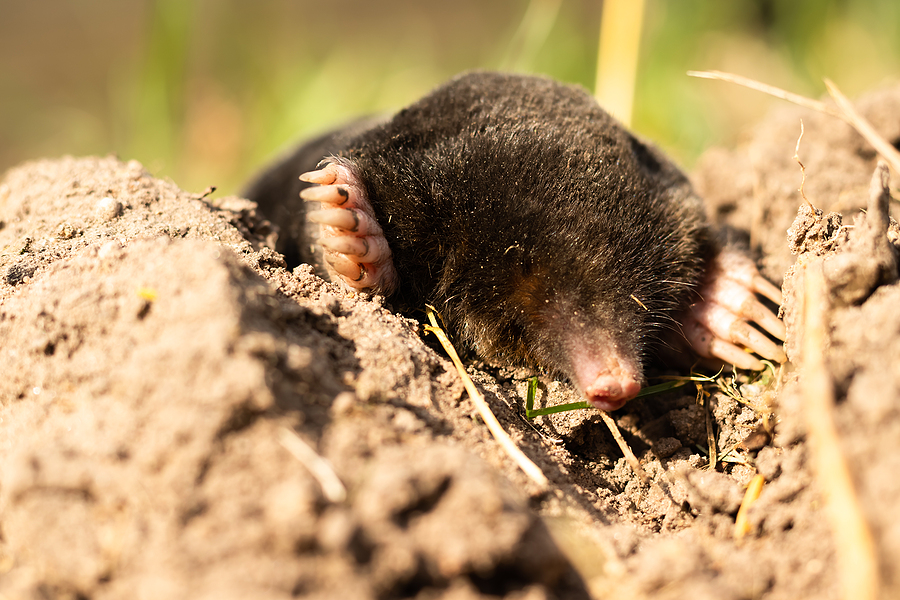Yard moles are one of the most destructive and frustrating nuisance animals in the Tennessee region. Not only are they difficult to keep out, let alone get rid of, but they are also capable of causing a massive amount of damage to your lawn, mulch beds, and gardens.
If you are having an issue with nuisance moles in your yard, it is important to educate yourself on the best practices for critter removal and control. Start by learning about the most common yard mole species in the United States so you know which type of mole you are dealing with.

Types of Animal Moles in the United States
The most common species of moles in the United States are the Eastern moles, Star-Nosed moles, and Shrew moles. Although very similar in nature, each species has its own set of unique characteristics and attributes.
The Eastern Mole (Scalopus aquaticus)
The Eastern mole (Scalopus aquaticus), also referred to as the Common mole or North American mole, is the most common species of mole in North America. In fact, they can be found in regions spanning from Canada to Mexico, giving them the widest range of all the mole species. They appear like any standard mole you would imagine, with long snouts, hidden eyes, dark sleek fur, short bodies, and spade-shaped paws. Adults are medium-sized, generally around 6 inches in length not including their tails, and around 2.5 ounces in weight. This same mole is known as the European mole in Europe and Asia.
Star-Nosed Mole (Condylura cristata)
Generally native to the Eastern coastal regions, the Star-Nosed mole (Condylura cristata) is a unique mole species due to its protrusions that extend out of their snouts, making them look like one of those monsters on Stranger Things. These are called their Eimer’s organs, which are touch organs that have over 25,000 miniscule sensory receptors. They use this star-shaped snout to acutely detect insects and similar prey in soil. Scientific theories suggest their sensory receptors can detect seismic wave vibrations! They also have hairy tails, making them even more distinct from the Common mole.
American Shrew Mole (Neurotrichus gibbsii)
The American shrew mole (Neurotrichus gibbsii), also referred to as Gibb’s Shrew Mole and Least Shrew Mole, is special in that it is the smallest species of yard mole in world. Now, shrews and moles are two different types of animals, but this mole gets its name because it looks more like a shrew than it does a mole, namely because of its fur. Their habitat range stays consistent, from Middle California to the southern-most cities in British Columbia. They can also survive at higher elevations, which is why they can be found inhabiting the Cascade and Sierra Nevada Mountain ranges.
Are you dealing with nuisance moles? Let’s put a stop to it immediately! Contact us at 615-337-9165 for TWRA licensed and insured Nashville, TN critter control for moles and more. We serve commercial clients, too!
Related Posts:
What to Do About a Yard Mole Outbreak
Common Household Ingredients That Will Repel Nuisance Wildlife
How to Protect Your House From Nuisance Wildlife in Tennessee
